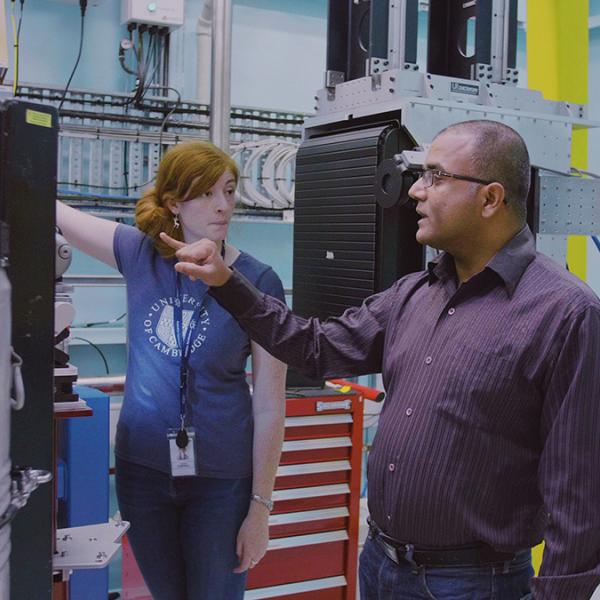
Key Points
-
Researchers from the Walter and Eliza Hall Institute are using the unique immune system of the alpaca to investigate mechanisms to prevent COVID-19 infection
-
The alpaca and other camelids produce nanobody-sized antibodies that can bind to target antigens, important biological molecules on the surface of the virus
-
The team used the microfocus beamline at the Australian Synchrotron to determine important structural information about how the nanobody binds with the antigen
Scientists from the Walter and Eliza Hall Institute (WEHI) are using the unique immune system of the alpaca and techniques at the Australian Synchrotron as part of research using antibodies to disrupt COVID-19 viral entry into cells.
The camelid species, which includes alpacas, llamas and camels, produces nanobody-sized antibodies, which are the smallest naturally derived fragments that will bind with antigens (target biological molecules on a pathogen).
They also produce an antibodies similar to human antibodies but it is the nanobodies that are the focus of the research by investigators at the WEHI led by Joint Head of Infectious Diseases, Associate Professor Wai-Hong Tham.
They have used the microfocus crystallography beamline (MX2) at the Australian Synchrotron to screen for nanobodies that inhibit the interaction of virus spike proteins on the surface of the virus with its human receptor.
Entry of the virus into human cells is made possible by the interaction between the virus spike protein and its human receptor.
To generate nanobodies, alpacas are immunised with non-infectious virus spike protein and receptor-binding domain proteins.
Nanobodies produced from isolated plasma cells from the alpaca can be cloned into libraries, which are then used to select for COVID-19 antigen-specific nanobodies.
The WEHI team is looking for nanobodies that inhibit the interaction of the virus spike proteins with its human receptor to stop virus entry and prevent SARS-CoV-2 infection.
Along with their small size, nanobodies have other characteristics that make them attractive as potential therapeutics, which include high antigen-binding levels, solubility and increased stability. They can also be produced more easily than traditional antibodies.
These properties give them the potential to be used in the development of inhaled bio-therapies.
Two members of the WEHI team, Phillip Pymm and Melanie Dietrich are using the MX2 beamline to determine the structure of the lead inhibitory nanobodies bound with receptors of SARS-CoV-2, define the target area of the antigen and understand the structural mechanisms of inhibition.
They have been assisted by the beamline team at the Australian Synchrotron.
These structures will provide invaluable information that will allow further development of antibody therapies against SARS-CoV-2.
“Our nanobody project is part of five complementary antibody platforms that make up the biologics research program, deployed to deliver potent and safe antibody-based therapies against COVID-19,” A/Prof Tham said.
“Protein crystallography is one of the few techniques that can be used to determine the structure of delicate and complex biological molecules, and it has been utilised heavily in the search for both a vaccine and treatment,” said MX Principal Scientist Dr Rachel Williamson.
“We are maintaining the operation of the beamline in a safe manner to maintain critical research on COVID-19,” said MX Principal Scientist Dr Alan Riboldi-Tunnicliffe.
The alpacas that are associated with the research come from an East Gippsland site in Victoria are not harmed by the research.
This research has been reported widely in the Age and other media.

